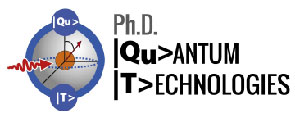Description
Quantum annealing is a branch of quantum computation aimed at solving optimization problems. The optimization problem is encoded in a quantum Hamiltonian, whose ground state is the wanted solution. Standard quantum annealing works as follows. The qubit system is prepared in the ground state of a simple Hamiltonian. Then, the qubits are evolved in time using a time-dependent Hamiltonian that, at the final time, coincides with the one used to encode the optimization problem. If the evolution is slow compared to the minimal level spacing, then the adiabatic theorem of quantum mechanics ensures macroscopic occupation of the target ground state at the end of the evolution.
The algorithm is limited by small spectral gaps, occurring in the presence of quantum phase transitions, and is realized in the presence of dissipation, due to the interaction with the environment. While disruptive in general, low-temperature environments can sometimes favor quantum annealing, improving the success probability. This beneficial effect can be further enhanced using pauses at specific times during the dynamics, favoring thermal relaxation towards the ground state.
My talk will present some results concerning quantum annealing in the presence of dissipation, with and without pauses, for the p-spin model, a prototypical Ising system often used as a benchmark for quantum annealing. This model is hardly studied experimentally due to its full connectivity and the presence of p-body interactions. However, its rotational symmetry allows for an easy numerical analysis in the weak coupling limit. I will show that dissipation and pauses can improve the success probability of the quantum annealing of this model.

